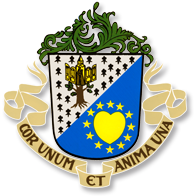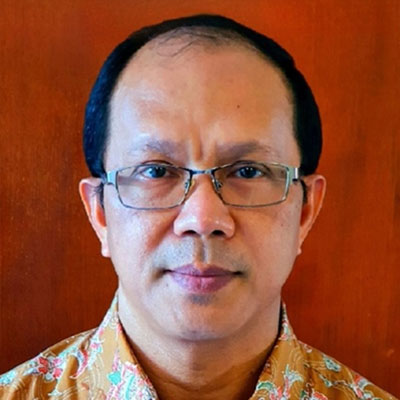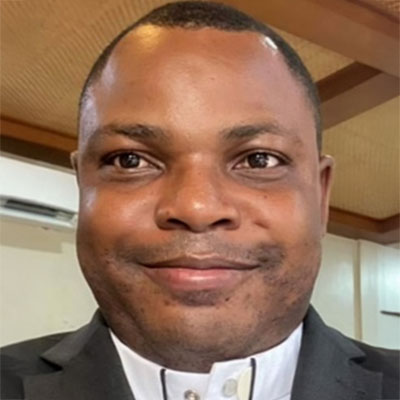 By Bill Wyndaele, cicm
By Bill Wyndaele, cicm
I have been a part of the life of this Province for 62 of its 75 years. I am 86 years old now. I am no longer good with names or dates. During these years, a lot has happened. There are far too many to mention, but these are some that stand out.
Promotion Development was the original primary reason for establishing the US Mission in 1946. That is why Ernest Dieltiens was sent from China to the United States. We can only marvel at the generosity of US Catholics after 75 years of Development and Mission Awareness Work. Many benefactors became regular supporters of our missions and true Missionhurst friends. We had six men assigned to travel around the country making mission appeals in the early 1960s. For weeks at a time, they were on the road. Many confreres from other Provinces have since come to assist with mission appeals during the summer. For many years, Missionhurst Magazine was distributed to thousands of readers. In recent years, the development office has shifted its focus away from the Magazine and mailing appeals and toward a website, https://www.missionhurstcicm.org, as a more modern outreach to potential benefactors and mission awareness. We are very proud of what we have done over the years on behalf of the other CICM Provinces, and we are committed to continuing this work as a primary commitment of our Province.
Pastoral work was also accepted to make the American bishops more open to our mission appeal work. When headquarters decided to launch a mission in the United States in 1946, the number of members sent increased rapidly. It was decided to focus on the Black Ministry. Forty-five confreres were assigned to the US Mission during the first three years. It wasn’t easy to find dioceses willing to provide Black Parishes for all of these confreres. So, many were sent to Texas and several rural parishes in Virginia and Louisiana. On July 17, 1949, the General Government made the US Mission the US Province.
When I arrived in 1960, it had grown into a large Province with 86 confreres, the majority of whom were Belgian, and a few were Dutch. They were dispersed throughout the country. There were groups of confreres in the North (Detroit, Philadelphia, and Northern Virginia) who were separated from those in the South (Texas, Louisiana).
We still had several confreres working as associate pastors in Black parishes in Philadelphia and Detroit when, in the early 1960s, several confreres who had been working as associate pastors in Black parishes were drafted to become teachers in a high school (see below). By 1980, Our Lady of Sorrows, a mixed community of Blacks and people of Belgian origin, had only one confrere left. In 1994, he retired. This marked the end of our presence and Black ministry in Detroit. In Philadelphia, we had John Van de Paer, who had been George Vermeiren’s associate pastor at a predominantly Black parish, St. Charles Borromeo, since 1952 and became its pastor in 1981. He worked there successfully until his retirement in 1995. However, this would be the end of the Black Ministry in our Province. More and more confreres were being assigned to the Hispanic Ministry. The Provincial Assembly of 1980 chose to prioritize the Hispanic Ministry, with a focus on the poor. Since then, this option has been renewed in every Provincial Assembly. Until 1960, a couple of young confreres were sent from Europe each year, but in the 1960s, there was a significant decline in missionary vocations in Belgium. After their studies, very few new members were assigned to the US Province. By the late 1980s, there was growing concern that we were becoming an aging, stagnant Province. But things would change. Today we are 33.
Americanization and Formation
It was decided early in our history to recruit Americans for our Congregation. In 1958, the first novitiate was established. The Province decided to accept the staffing of a Boys’ High School (Archbishop Wood High School) in the Archdiocese of Philadelphia and committed to providing up to 20 confreres for administration and teaching staff. The school first opened in 1964. The hope was that this would become a regular source for CICM vocations. However, the 1960s were a difficult period for vocations. In reality, only three graduates joined CICM over a four-year period. By 1970, it was clear that it was not appropriate for a missionary Congregation to invest so many of its members in a high school that produced so few CICM vocations. In 1974, the school was returned to the Archdiocese. Between 1958 and 1988, we had 20 novitiates and a total of 160 novices. In 1981, it was decided to postpone the novitiate until after Philosophy and instead begin a pre-novitiate program. In the 1970s, there were a lot of young men in the pre-novitiate program, but only a few made it to the novitiate. The late 1960s and early 1970s were challenging times for most formation programs in the United States. Even though we cannot call our recruitment and formation programs numerically successful, our American (US and Canadian) confreres have proven to be wonderful in their mission assignments and their service to the Congregation. Three were Provincial Superiors, one was a General Councilor, and another was a General Councilor and then a Superior General. We are proud of them and grateful for their service.
The last Novitiate was held in San Antonio from 1985 to 1986, with only one Novice. It was decided that no further efforts would be made to recruit in the United States. However, there was a strong desire to resume recruiting during the last two Provincial Assemblies. We currently have one pre-novice who is attending philosophy classes in San Antonio, Texas. We pray and hope for more vocations in the future.
The need to Americanize the US Province was felt in the late 1970s and early 1980s. Several US confreres were called back from their missions abroad to work for vocation animation, Initial Formation, and development projects (Promotion). From there, they would gradually advance to positions of leadership. Joe Giordano was the first American-born confrere to be appointed Provincial Superior in 1988. (1988-1994). From 1999 to 2006, Bill Quigley served as Provincial Superior. Mike Hann, a Canadian-born Canadian, was the first non-Belgian Rector of the Provincial House (2003-2012), and he was succeeded by Joe Giordano (2012 - 2020).
Internationalization of the Province
Three Congolese confreres were appointed to our Province between 1982 and 1983, but two were recalled after only a few years for assignments in their home Province. In 1989, 64 of the Province’s 69 members were still of Belgian or Dutch origin, growing older and thus less available for new assignments. When the General Government asked the Provincial Government how we saw the future of the US Province, our response was: “We do believe in the future of our U.S. Province, but ... in the face of the aging process of the membership of the U. S. Province ... we foresee the need of having 25 young confreres, preferably from different cultures, assigned to our Province within the next ten years...”
The General Government responded by saying that the United States Province was invaluable to the rest of the Congregation. From then on, there was a steady influx of young confreres from the Democratic Republic of the Congo, Indonesia, and the Philippines. The Province was quickly revitalized and truly internationalized. Several of these newcomers studied theology in San Antonio, Texas. The most recent ones participated in a three-year internship program. They are given the time they require to learn both English and Spanish and to begin the ministry under proper supervision. There are currently 11 Congolese, nine Filipinos, six Americans (five US, one Canadian), three Indonesians, one Zambian, and three Belgians in retirement among the 33 members. The consensus is that we are a relatively young and international Province.
Fuller Participation by All Members in the Government of the Province and Ongoing Formation
Our Province began involving more confreres in the Province’s decision-making process under the influence of “Kindling the Fire” (Acts of the General Chapter of 1974). In 1980, a Provincial Assembly was held at Missionhurst, where 20 delegates out of a total membership of 83 would join the members of the Provincial Government with voting rights. This Provincial Assembly decided to take our Ongoing Formation seriously. A Director of Ongoing Formation was appointed with the task of publishing and proposing sabbatical models. Between 1981 and 1984, many confreres participated in a renewal or sabbatical program. Aside from that, every other year, we held Ongoing Formation days that all members attended. The United States Church has a number of wonderful programs for spiritual renewal, healing, and leadership training. Between 1976 and 1990, we facilitated the participation of 69 members of other CICM Provinces in a sabbatical program in the United States. We will continue to do so.
Provincial Assemblies are now held every four years. Every time, we set goals for the next four years based on our CICM Charism. These Assemblies, as well as our annual retreats where all members gather, have instilled a new spirit in our group. We have the opportunity to get to know one another, we pray together, we make decisions together, and we now understand that we are all responsible for our Province. Sharing one’s thoughts and feelings was unusual before 1980 because one was afraid of the reaction of others. But, over time, we grew more accustomed to sharing our deepest thoughts, wishes, and prayers. In this regard, the assistance of qualified facilitators for the Assemblies has proven to be highly beneficial.
There is much more I could say, but my final word is one of gratitude. We have had our darker moments in our Province’s history, but we must remember to count our blessings. The Lord has blessed us. We are grateful for the many blessings that have come our way. We are grateful for the excellent leadership provided by our Institute’s General Chapters and Provincial Superiors. Gratitude for all the men who have been a part of our Province and for the hope that the younger members of the Province have held out to us. In the words of Dag Hammarskjold: “For all that has been, Thank you. For all that is to come, Yes!”
https://www.cicm-mission.org/index.php/en/news/45-in-the-frontline/423-cicm-us-seventy-five-years-of-service-1946-2021-then-and-today#sigProId5f46f35d34








